Reputation Cookies

This piece was originally published on Decentralised.co. We at GCR will bring to you long forms from Decentralised twice every Month – every alternate Thursday! Decentralised.co is trusted by management at over 200 firms to stay updated on the trends, data and insights that matter. Sign up for their newsletter below—more on this collaboration for our most active members on Discord.
In Civilized to Death, author Christopher Ryan explains how childhood has evolved. In the past, kids were expected to play together at playgrounds. Post-school time was kept for going around the neighbourhood in pursuit of play. As our cities grew bigger and our sense of safety declined, children began spending more time inside houses.
But our natural tendency to seek community, play, and a sense of escape together has not vanished. Humans seek escape in myriad ways. And the mechanisms we use for escape — music, art and stories — have developed over the millennia.
A different way this has translated for adults is how our calendars are no longer in sync. In the past, unorganised economies dominated by farming or other forms of menial labour were self-regulated in terms of how much work crept into people’s lives. You could realistically expect all of your friends to have time off around the same time you took time off because of similar work schedules.
Modern-day workplaces, being global in nature, often do not align schedules the way festivities of past centuries could. So we are left with less time with one another.
I mention this because games are one of the few leisure activities that tackle both issues — the absence of playtime and the lack of coordinated time off. Unlike dinner or a trek, friends can hop onto a game together in minutes. The bits of coordination, communication and collaboration that playgrounds enabled in past decades are now being replicated in a digital alternative through games. Whether this has long-term psychological benefits remains to be seen.
But games are standing in for the gaps the absence of playgrounds and coordinated time off (among adults) have left in society. You see where I’m going with this. Gaming, community, playtime, coordination. Today’s issue goes deep into one of the largest guild platforms in the world and seeks answers to some fundamental questions around Web3 gaming as a whole.
We have been eyeing Web3 gaming at this publication for quite a while. Last year, we were early to write about how Ronin is blooming into an ecosystem. We followed it up with a podcast and a long-form on an emerging Web3 gaming company from India. Today’s issue is written with support and an abundance of insights from Yield Guild Games (YGG), a platform enabling guilds and gamers to form on-chain groups.
In the interest of disclosures — it is sponsored. We spent six months speaking to and learning from many of YGG’s users. They were kind enough to open up everything about their business while we connected the dots. This article is what came of it.
If you are a startup looking to collaborate with Decentralised.co – fill up the form below. You can read about how we work with external startups on stories here.
As I’d written in the past, we are increasingly mapping out on-chain communities. In that spirit, if you are a YGG community member holding more than 100 of their tokens, consider filling out the form here on Guild for some free goodies.
Back to our story. What follows is a breakdown of how guilds came to be, why they matter and what the future holds for them. Spoiler warning: I criticise the model occasionally but also explore the new primitives that tackle the issues guilds face. Every once in a while, we’ll zoom out and see how the internet evolved.
The piece is a bit long as it summarises six months of conversations and two years of pondering the same question through a bear market:
Why do Web3 games even matter?
Hopefully, you have an answer to it by the end of the piece. Let’s dig in.
The Opportunity
Web3 gaming has had a rough two years. We are emerging from the proverbial trough of disillusionment. Several assumptions the markets considered possible did not play out the way they were expected to. I’ll lay them down to address what went wrong before we head to what could go right in this cycle.
- Play-to-Earn (P2E) economies drastically reduced in size as retail interest in crypto reduced.
- Break-out success stories of AAA titles using NFTs did not happen (yet).
- Scholarships or the guild model for gaming did not become a global phenomenon.
- Game studios could not use NFT royalties as a business model (yet).
When looking through the thin lens of a single market cycle, all of these are catastrophic failures when you consider that last bull run, the promise was that Web3 gaming could offer alternative employment models.
Tokens soared, and then they crashed. Investors applauded, then sat in silence. A handful of players continued to build while staying strong to their convictions. YGG was one of them.
They were building with unwavering conviction even as the market wrote off guilds as a model. But that is not due to some altruistic philosophy. It is because Gabby Dizon (co-founder of YGG) and his crew understand the opportunity at hand. So, before I head into what they are building and why it counts, I want to give you a quick breakdown of the opportunity in gaming and where we are at with Web3 today.
According to PWC, the size of the gaming market as of 2023 is estimated at $223 billion, of which some $90 billion is with casual games. There are two ways to interpret that first figure. One is that it is more than 200 Taylor Swift Eras Tours’ worth of revenue. Or it is about twice as large as the size of the market for movies ($90 billion) and almost 10 times as big as music ($25 billion). Asia is emerging as a powerhouse within that almost quarter-trillion-dollar pie. According to data from Google, Asian economies represented 48% of global gaming revenue as early as 2019.
A total of 1.33 billion gamers were expected to be onboarded from these economies. The data also suggested that female participation in gaming has been on the rise. About 40% of the user base was female. Women did some 60% of the spending on mobile games in China. A Chinese woman playing casual games is not what would come to mind if I asked you what the stereotypical gamer looks like. But that is the state of the market.
These consumer trends are translating to meaningful numbers on Wall Street, too. Roblox, for instance, has seen its revenue surge from a mere $325 million in 2018 to over $2.6 billion last year. Older gaming studios like Electronic Arts have seen a similar surge. It has gone from $4.8 billion in revenue to nearly $7.5 billion. Both firms have struggled to capture much of that value as their market capitalisations have remained relatively flat.
The exception was Take-Two Interactive Software, the firm behind Grand Theft Auto. Their revenue surged from $1.7 billion in 2017 to $5.4 billion this year. The market capitalisation has roughly doubled from $14 billion to $28 billion.
You get it. Gaming is big business. But how much of that is captured by Web3? Does the seasonality of market cycles affect it? One place to measure it is through the lens of verifying active users across all Web3 games. Footprint Analytics has a dashboard that checks for activity across multiple prominent networks.

Here’s a key metric that stood out: In 2022, at peak, Web3 games had close to 2 million active users each day. It went to a low of 800,000. Today, that figure is back to a high of 2.7 million. We have beyond recovered in terms of active users engaging with games. This presumes each wallet is a single user, which is often not the case as users tend to have multiple wallets.
An alternative way to verify “recovery” would be through seeing the traffic that goes to Web3 gaming-related websites.
According to a report from LootRush, Web3 gaming websites saw over 60 million hits over the last month. Epic had ~60 million browser hits, while Binance had more than 50 million hits. There is the obvious caveat that this is a weak metric on its own. LootRush added up the traffic to some 4,000 games to compare against Binance or Coinbase. But the point remains that substantial retail interest is inbound to the industry.
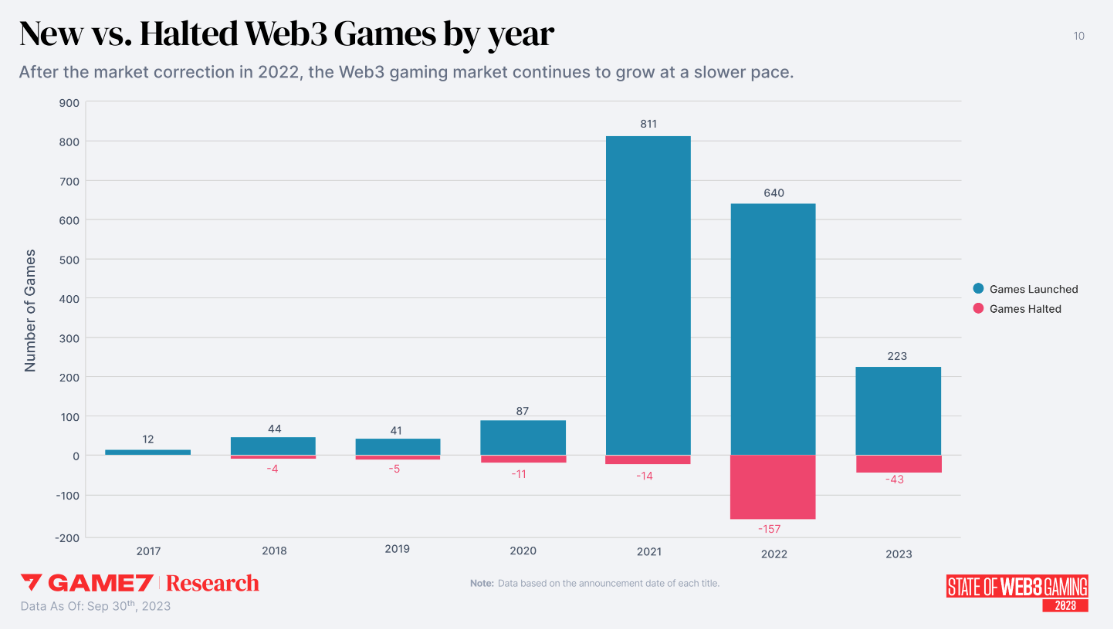
Game7’s research on the state of Web3 gaming offered a more sober outlook. According to them, some 811 games were launched in 2021. Between 2022 and 2023, a combined 210 games halted industry interaction. That number may only increase unless the market environment changes drastically.
But here’s one fact that may have gone unnoticed: Between 2020 and 2021, there was a tenfold increase in the number of Web3 games released. With the return of the bull market, even more people may be vying to be a part of Web3 gaming. For instance, last October saw 69 new Web3-linked games listed on the Epic Games Store compared to just two in June of last year. So, there are two forces happening in parallel:
- Games are built, deployed and shut down.
- More new games are being released.
This is following the standard pattern all new market segments see. We often get caught up in point 1 — where a founder shuts down their attempt at Web3 gaming and presumes the whole industry is shutting shop. But that is not the case. By conservative estimates, some ~1 million active wallets interact with Web3 gaming products daily. These are wallets, not users.
I would presume that if we account for users that interact with games with NFTs at the periphery, that number is closer to ~10 million. It is still only about ~1% of the actual market for gaming if we presume gaming as a whole sees close to ~1 billion users.
The current state of Web3 gaming is very similar to internet streaming in the late 1990s. Both are stifled due to bandwidth constraints, consumer preferences are set in stone, and a Netflix moment for this alternative approach to gaming has not exactly happened. Investors understand that. If you break down the money going into Web3 gaming as a theme, it becomes obvious that the infrastructure layer is where the bulk of the money is today.
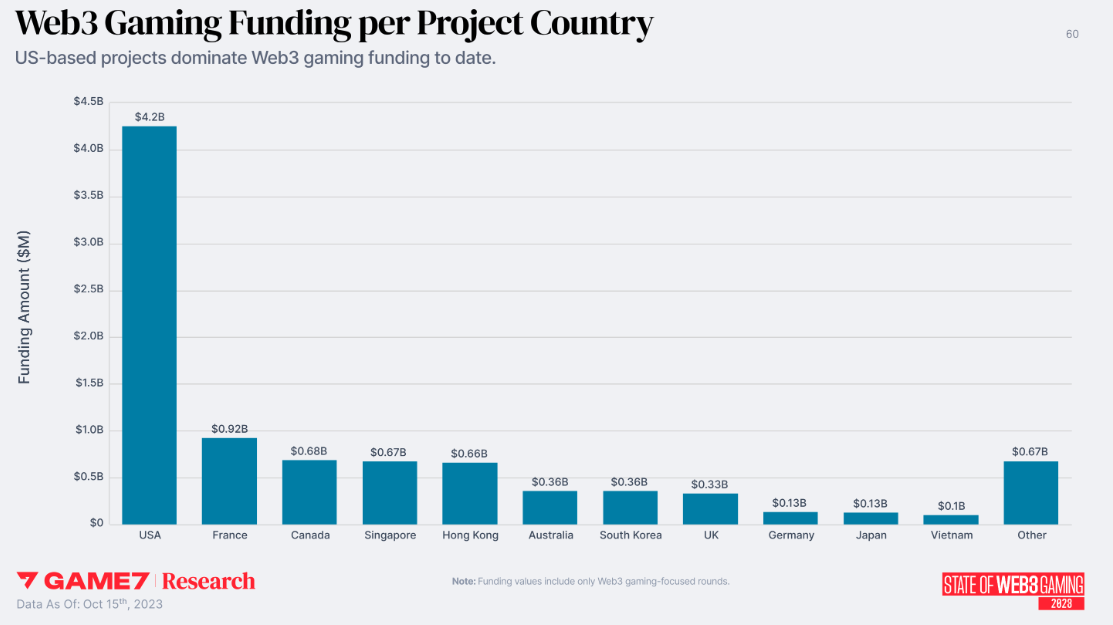
Networks like ImmutableX, Polygon and Ronin dominate the conversation. Even when money goes into applications, it is for marketplaces or NFT tooling. The risks linked with betting on a single game are far too high. Only about $500 million has gone into esports, guilds or NFT IPs in the past few years. The risk-off approach becomes even more evident when considering capital’s geographic dispersion.
For instance, despite Vietnam being the forerunner of the P2E conversation, it attracted only about $100 million in Web3 gaming funding. Firms in the US, in comparison, attracted $4.2 billion. (FWIW, Singapore and Hong Kong cumulatively attracted $1.2 billion, and the variance could be a function of ease of doing business.)
Understanding Guilds
The concept of guilds may be a bit unfamiliar to some of our readers. So here is an explainer. Guilds have historically been loose economic associations that work towards a shared goal. First prominent in Europe during the medieval ages, they used to be independent trade groups consisting of merchants that wanted to protect their interests.
In the realm of gaming, guilds have simply been groups of gamers that play together. Naturally, they may aggregate around a shared game (such as DOTA) or skill levels. But in essence, they are groups that work together for a shared goal.
The guild model in Web3 brings this concept on-chain. A group of wallets owned by gamers may coordinate on shared goals. For instance, a group of friends may come together to simply play a game that is hard to finish in single-player mode. At the end of the game (in a Web3-native model), it may send back tokens to all the wallets of the players that came to play it. But the more interesting thing on-chain guilds have enabled is allowing players to have economic incentives for collaborating with one another.
For instance, a guild may have users of very differing personas. One may be good at coming up with strategies to help crack a game. Another may be a trader. And a third may only have their time to contribute. On-chain guilds can align economic incentives between all three players such that everyone benefits. What I mean by that is a person could buy an NFT (similar to an in-game item) for a game and offer it on loan to a friend, who then grinds it out in a game that takes a lot of time.
In order to crack a level, they may need the expertise of someone that comes up with strategies. Presuming there are rewards (like tokens) for finishing levels, a guild would be able to help distribute those rewards among all of them.
What is the role of a blockchain here? It helps with a few things. Firstly, smart contracts allow the gamer who purchased the in-game asset to offer it momentarily to a third person without the risk of losing it permanently. The way it works is that the NFTs could be used only for the purpose of playing a game but may not be transferable (to potentially sell it).
Blockchain infrastructure (on networks like Ethereum) can help send tokens (the rewards) with ease anywhere in the world. As long as there is a market where gamers can convert the reward tokens to their local fiat currency, the in-game rewards they receive could pay for real-life expenses.
Now, don’t get me wrong. Grind culture has been in the gaming industry for decades. World of Warcraft and Farmville had open markets for their assets. What blockchains bring to this equation is easier coordination between players, the establishment of reputation and the distribution of rewards at a global scale. For instance, you may have been a gamer who sold millions of dollars worth of assets in Runescape a while back — but there’s no proof of it. Since that data is not on an open graph (like on Ethereum), a new game (like Genshin Impact) cannot specifically target you. And the market for such assets was restricted to a small portion of the world.
There is a certain level of stigma attached to gamers grinding in specific games to get assets. That is partly because, in the past, these markets were underpaid. Gaming guilds in Web3 establish a free and fair market for rewards (tokens) and in-game assets, bringing in much-needed dollar liquidity for gamers. But that is the trading side of it. Blockchain-based guilds have the ability to scale and coordinate between tens of thousands of players in a trustless fashion.
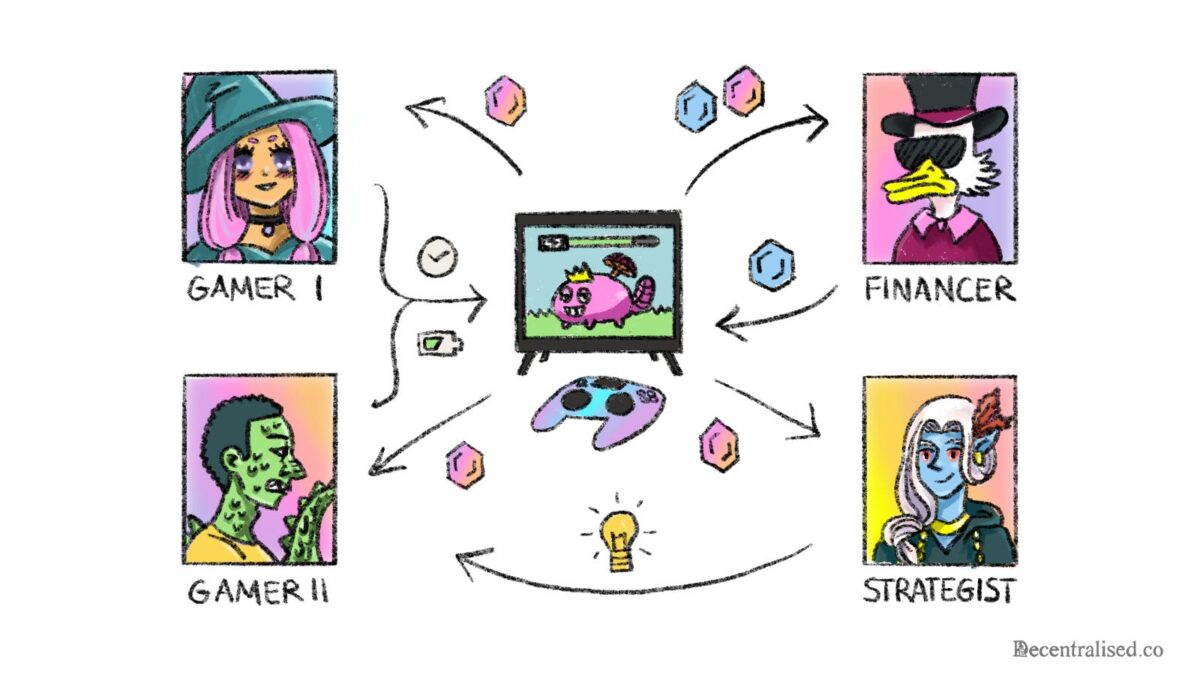
An investor might buy NFTs worth thousands of dollars and offer them on loans to multiple players looking to spend time in a game for rewards. There might be complex guilds that build their own brand identity and culture with the intention of having earlier access to new games.
Guilds, in the context of Web3, are massive multiplayer games with a shared bank account. In 2021, much of it was focused on assets (NFTs) and rewards (tokens like SLP). In 2023, with the arrival of soulbound tokens, it is also becoming about reputation. So, there could be guilds where there are no economic motives at all. It may simply be about competing and having an on-chain record for being the best in a particular game. Or, it could be about specialising in a very particular aspect of a game such as crafting or tutoring new gamers.
If we consider games as digital economies, guilds are simply people coordinating between themselves for fun and profit.
The Come Up
To understand what’s happening with Web3 gaming today, we must peep into the past. A good way to do that would be to follow Gabby’s journey as a gamer and entrepreneur. He was a part of the team at one of the Philippines’ first gaming studios. By the late 2000s, gaming was in a period of flux. The arrival of mobile devices made gaming an activity that was usually stationary, done on a console or PC, to one that could be done on the move.
As this new platform arrived, developers had to rapidly shift from building browser-based, free games to mobile application-oriented ones. Attention was slowly shifting from desktop and television to mobile devices. And developers followed attention. There was only one problem. While desktop gaming proliferated through pirated gaming or free browser-based applications supported by ads, mobile games struggled to monetise early on.
There was a thin window of opportunity for indie devs here. While most traditional studios were preoccupied with focusing on their PC and console titles, developers that were nimble enough to move into this new platform, mobile, had early mover advantages. Gamers had a handful of choices, and there were no clear category leaders at the time. But with that opportunity came risks.
The challenge was twofold. On one hand, the critical mass of users required to support a mobile game purely through advertisements did not exist. You could break even as an indie developer, but running a studio? Possibly not. On the other hand, if you were running a paid application, collecting payments in emerging markets was difficult as payment rails did not exist yet. Much of the emerging world was not using debit cards for online applications. And users were not used to paying for software until it was needed for productivity.
Free-to-Play emerged as a plausible business model amidst this friction of small user bases and difficulties in monetisation. The proposition was quite simple. Instead of charging users upfront, you offer the game itself for free. You then offer in-game items and upgrades for a small fee. Developers would benefit from the fee generated per item sold whilst subsidising access for the vast majority of gamers. The financialisation of games had just begun due to three factors coming together:
- Digital payrails have vastly evolved since the early 2000s, allowing developers to capture payments multiple times once a game was sold.
- The internet made it possible to continually update games, allowing developers to release new in-game items and experiences and significantly increasing the lifespan of the games.
- Mobile devices increased both the number of players and the time spent by gamers in virtual worlds.
A decade later, as improvements in console gaming attracted a critical mass of users, multiple game studios have replicated similar strategies for their AAA titles. Games like Fortnite, Call of Duty and PUBG have free-to-play versions on console gaming. The costs of developing and releasing such titles are subsidised by items purchased by users.
But the model is still predicated on collecting real money for virtual items. It would enrich developers, but gamers would have no means of porting their assets or selling them for a profit at a later point in time. The often-cited case here is that of CS:GO. The game has had a functional economy that has worked with Steam since at least 2012. But that worked because they had a critical mass of users garnered over a decade. They could also afford to create a marketplace (Valve owns Steam) for users to trade with one another.
Smaller indie developers lacked both the infrastructure and the critical mass of users to facilitate in-game marketplaces — a reality many Web3 developers building games on isolated networks are beginning to recognise.
For Gabby, the allure of crypto was its ability to facilitate smart contracts. He had heard of this strange new “crypto” thing from friends who worked in the tech industry as early as 2014. They were using it for remittance, and payments, on their own, did not interest him much. But the ability to allow users to own assets, move them around and trade with one another seemed alluring.
Like Jiho Zirlin and Alex Larsen at Sky Mavis (creators of Axie Infinity), Gabby came to know of what blockchains could do for gaming through CryptoKitties. In fact, he spoke about what NFTs could do for gaming at a side dinner at the Game Developers Conference in San Francisco that year. Albeit unofficial, the individuals gathered there would soon define what we know today as Web3 gaming.

An image of the team working on BattleRacers was posted on Medium in 2019. Gabby is on the extreme left.
Where CryptoKitties would allow users to hold, trade and move NFTs, Axie would build towards providing these NFTs with a utility. The game Jiho and Alex built, Axie Infinity, set the foundations for what would eventually become the Web3 gaming ecosystem. Gabby followed a similar route. In 2019, he was building a game titled Battle Racers on Polygon. (It is how he and Sid initially met.)
But as March 2020 arrived, two forces were at play. Firstly, Gabby — like many other developers — got liquidated as Bitcoin went from $12,000 to under $5,000 in hours. Secondly, there was a rapid decline in the number of gamers interested in NFTs.
Or so Gabby thought. A few months later, he was invited to judge an Axie breeding competition. Much like you have competitions for rating the beauty of dogs, camels and horses, this was a virtual event set up by a community of Axie Infinity users. At the time, Gabby noticed a simple thing. The vast majority of users in the Discord channel were from where he was, the Philippines.
As someone who had seen the rapid rise and evolution of the internet in the region during the early 2000s, he saw a pattern.
To understand what I mean, we need to go back in time — to 2002, when the social network Friendster was battling for prominence. By the mid-2000s, as alternatives like Facebook and Myspace began dominating the US markets, Friendster found a home in the Philippines. Users that were coming online for the first time would soon leave testimonials for one another.
Today, it feels odd to leave reviews for one another on the web. But for a generation just coming online, it was a mechanism of building clout through speaking praises for one another. Reviews from friends were representative of the “influence” you had on your network in an age before algorithms and content feeds.
Friendster found some 12 million active users in the Philippines as early as 2009. In fact, on Pinoy Friendster Day, an event hosted at a mall, some 7,000 individuals came out to meet. But by then, Facebook had two things going for it. Firstly, the network effects of a strong social graph formed primarily through focusing on prominent schools in the US.
Secondly, the arrival of apps like Farmville (by Zynga) onboarding users interested in gaming. Friendster’s Philippine business was eventually acquired for $100 million and pivoted towards gaming, but it soon shut shop due to challenges with monetisation. Years later, a different game would tap into the same market for growth.
The region’s high number of English-speaking members is a gold mine for an emergent start-up looking for a user base. Axie Infinity was one of the earliest Web3-native gaming firms to target the region for growth. In 2019, users could offer their username and password to a friend, who could then grind it out for hours on Axie Infinity. The NFT assets owned by the user could not be transferred solely by possessing the username and password. To do that, one needed the private keys, much like you have on MetaMask today. Thus, the guild model was born.
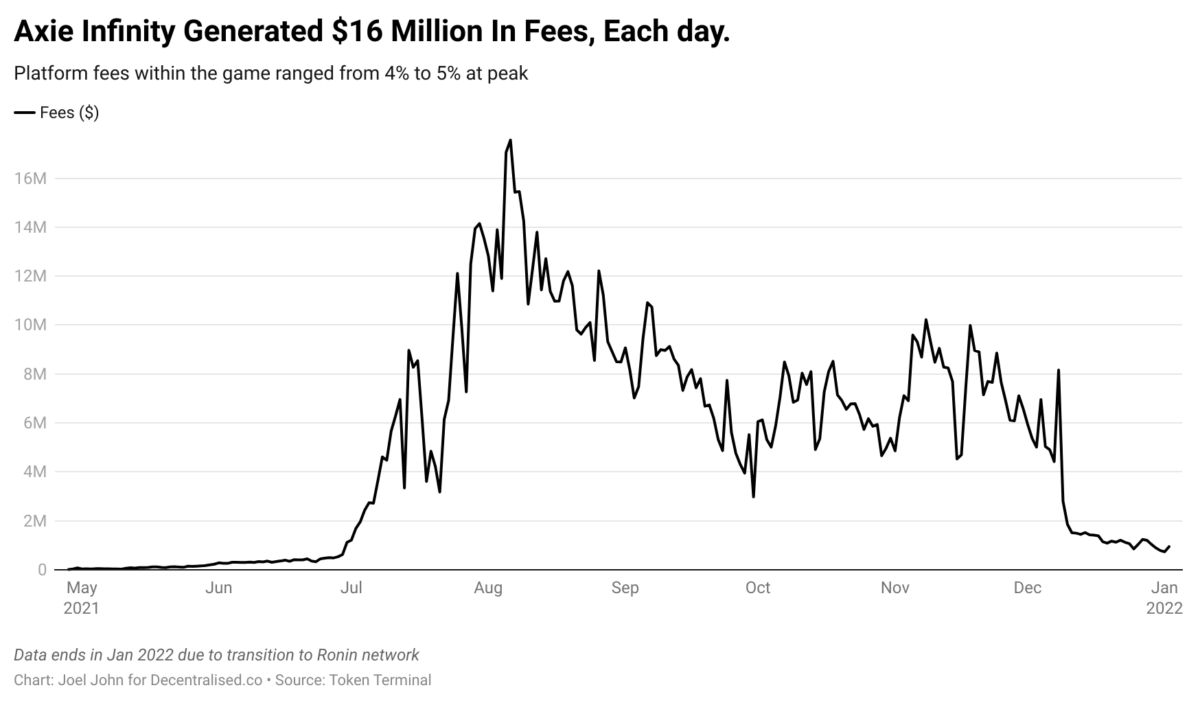
In 2020, if you wanted to play Axie Infinity, you were required to own a minimum of three NFTs. It could cost anywhere from $200 to over $1,000, depending on the nature of the NFTs in question. This still is a considerable amount of money to play a game. More than the equivalent of a few months’ wages in the region. The guild model started out with small mom-and-pop shops investing in NFTs, renting out accounts to users, and offering a split of the income generated with gamers spending time in Axie.
As the price of AXS and SLP — the two tokens used in Axie Infinity — rose, the income generated through guilds rose in tandem. And thus came the age of the guild. Gabby saw the opportunity to create a guild of guilds at the time. A single entity that would combine product, community and gaming expertise to help onboard millions of players to the new Web3-native gaming economy.
They raised a $1.125 million pre-seed in January of 2021, led by Delphi Digital, followed by a $4 million Series A in June from Bitkraft. A16z led a post-token sale round with another $4.6 million.
But what was the business opportunity here? It boils down to economies of scale. A guild of guilds, with millions of gamers willing to try new products, could avail lower prices for the NFTs it needed to try games. The flywheel of growth would work like this:
- YGG acquires a large chunk of in-game NFTs.
- The NFTs are used to incentivise guilds to work with YGG.
- YGG grows as an increasing number of guilds offer NFTs that were not available to them earlier.
- Games could (hypothetically) offer lower prices for the NFTs they offered YGG as the gamer population increases.
In essence, YGG was serving two functions. They were becoming the primary driver for demand for many new Web3 games that were looking for distribution of their NFTs. At the same time, they were also becoming the go-to enabler that new guilds would want to work with. YGG, on its own, would not be in the business of onboarding gamers. Instead, it would emphasise enabling guilds to do that.
Keep in mind that much of YGG’s formative period was around the time millions of users were flocking to Web3. Not just gaming but all of the crypto industry experienced a huge influx of users who saw an opportunity to find an alternative source of income. This was a double-edged sword. On one side, users were flocking in at the lowest customer acquisition costs a firm could see.
But the rapid financialisation of the ecosystem also meant large swaths of users could get burnt if they saw these as avenues for livelihood instead of leisure. And that is what happened.
Aggregating Reputation
At the crux of much of the debate around Web3 gaming is this skewed perception of how games can enable livelihoods at a societal scale. They were never supposed to. The evolution of Web2 social networks was slow and steady. Over $20 billion will be spent on social media influencers this year.
But in the late 2000s, practically nobody thought social networks could generate a livelihood. On the contrary, platforms like YouTube had to seed tens of thousands of dollars among creators to incentivise them to create on the platforms.
More recently, even Substack began offering a minimum for creators willing to port towards their platform for blogging. Most platforms have a period where it garners sufficient attention, and users spend time within it before aspects of money creep in.
In Web3, the relationship between user and capital incentives is inverted. Users are often given capital incentives before spending considerable time on an application.
This is at the heart of the challenges most emergent applications in Web3 struggle with. When the markets go well, you see an influx of users and think you are well-positioned for growth. When markets decline, the financial nature of products leads users to losses. This is not to imply that gaming and financialisation don’t blend.
At least until 2011, when free-to-play games became the norm, it was common for a handful of gamers who spent the most money to subsidise the activity of the other 90% who engaged with it leisurely. Figuring out how to replicate it with Web3 native games is an emergent challenge in its own right.
One way to do it would be to track a gamer’s evolution over time. For instance, multiple games that are Web3-native today do not require users to own assets to play them. It is only when the gamer has sufficiently made progress within the game that they can open a wallet and assets are offered to them.
These users can then be handheld through a series of quests that get them accustomed to NFTs, how trading could work and the reasoning behind owning assets.
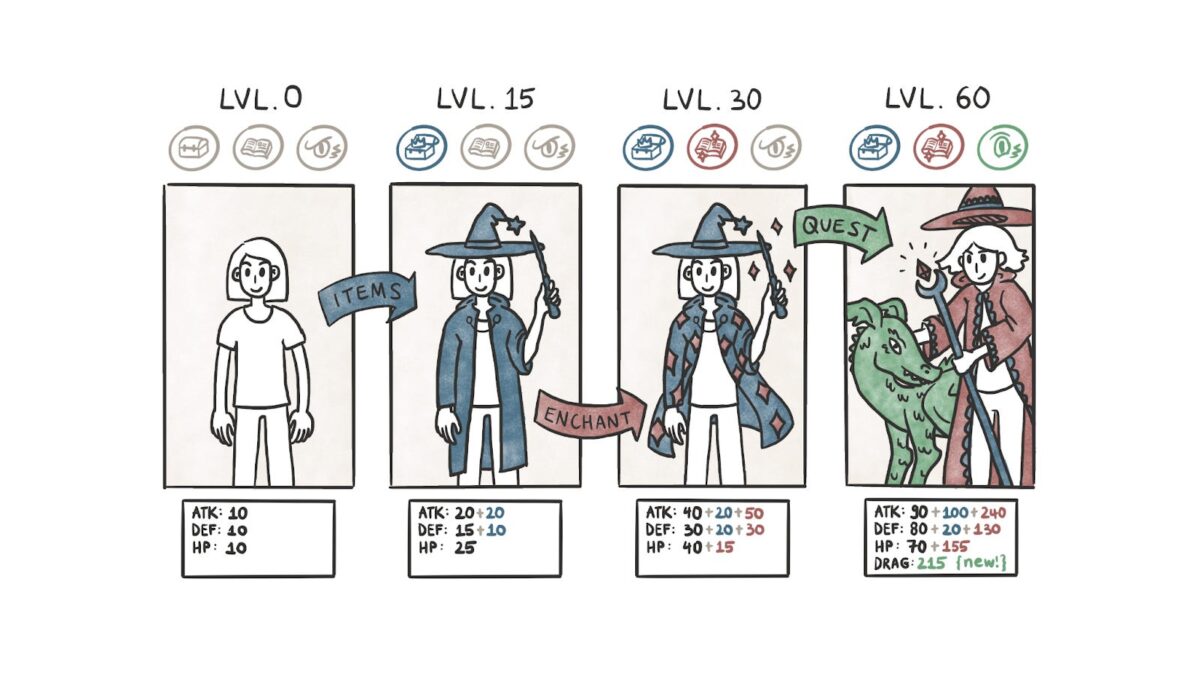
YGG’s product foray has been towards building a reputation network for gamers. Why? If you have a large enough network of gamers who have verifiably interacted early on with games, you can argue that games are better off targeting this subset of users instead of retail ones that don’t care much about Web3.
YGG brought this product to market in the form of soulbound tokens (SBTs). I have written about SBTs in the past, but for those hearing it for the first time, here’s a simple explainer.
NFTs linked to games had a boom phase partly because they could be transferred and traded. But this is simultaneously a bug and a feature. On one side, you want your gamers to own and benefit from their assets. On the other, you do not want to encourage unnecessary speculation. More importantly, you do not want the bulk of your game to be filled with anonymous bots that happen to purchase assets from the market and exploit them for more tokens.
This is where SBTs come into play. They are NFTs that cannot be transferred. A player can receive an NFT for being one of the earliest to try a new game, crossing certain levels or collaborating with other gamers to pass through difficult levels in a game.
YGG began offering soulbound tokens as part of its Guild Advancement Program (GAP). GAP is a series of gaming-related activities, or quests gamers can complete to demonstrate their abilities. The higher a gamer ranks in such GAP quests, the rarer the NFTs they hold.
The way it works is like this:
- Guild members receive a curated set of quests to do in games. Quests, in this context, could be anything ranging from finishing a level to collaborating with other gamers to complete multiple GAP quests together.
- Users who complete these quests get to mint NFTs. The harder a quest is, the rarer their NFTs are. Think of NFTs as a representation of how much time and effort a gamer has put into the games they love.
- NFT owners are further rewarded in liquid tokens (YGG tokens) for participating in the Guild Advancement Program.
So far, there have been four successful seasons of the Guild Advancement Program. As of writing this, the dollar value of the highest reward was around $1,500. For games, the advantage of participating in the GAP is having a curated subset of users who have verifiably spent time within a product.
For YGG, the upside is in curating a network of gamers who have verifiably spent time in a game and earned their reputation.
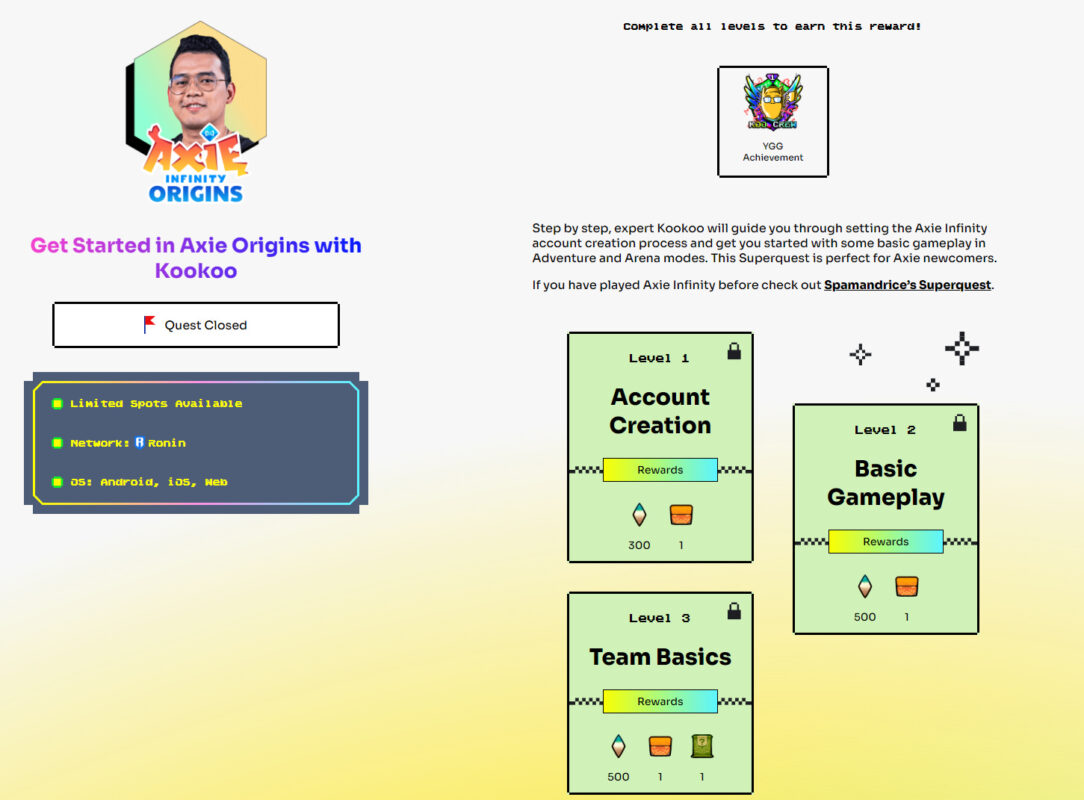
YGG assumes the role of the reputation issuer. They do this by embedding code deep in games using what are known as quest engines. The code embeds to track user interactions and attests to how good a gamer they are. Gamers are rewarded in NFTs based on their gaming performance.
Web3 allows a non-biased party to aggregate this data across a multitude of games. You can see a variation of this happening in Web3-native social networks like Farcaster too. Users own their handles and the social graphs linked to them. In Web3 games supported by YGG, users “own” their marks of reputation in the form of SBTs in their wallets.
The advantage of such a system is that if a product goes down for any reason, the users can still interact with one another using a third-party client. Gaming-native communities are not a new phenomenon. You don’t need NFTs to coordinate large numbers of individuals in a virtual economy. Roblox and Fortnite do it quite well today.
The difference with Web3-native gaming is that your reputation can be portable.
That last bit, reputation, is at the heart of what YGG is focused on. Each time you visit a website like Decentralised.co, there are elements of the information left in your browser that help the platform identify who you are as a user and your patterns of behaviour. The web runs on cookies. They are something that helps Amazon determine your purchase patterns or YouTube identify the kind of music you are most likely to listen to on a Saturday morning.
In Gabby’s words, YGG’s SBTs will become “cookies for on-chain reputation”.
I find it to be a simple pitch for what YGG is all about. At its heart, the product aims to create a network of verified users whose credentials are marked through real effort. In order to get these NFTs, users often need to spend hundreds of hours collaborating with one another in the early stages of a game.
Surely, much like 2021, there are liquid incentives (tokens) and NFTs that can be speculated on. But not everybody gets access to them. One needs to have the necessary reputation on-chain to be able to access these incentives.
YGG’s core innovations, when looked at through this lens, are its ability to bootstrap a community of users that can be early to Web3-native games and its suite of tools that track the gamer’s progress over some time. In the past, when a game launched, it would have to spend on inorganic marketing sources to reach the right players.
YGG’s contribution in working with them is threefold:
- It aggregates the most active gamers in the industry through their NFTs.
- It assists games in designing quests and game models based on their experience.
- It offers a suite of products that can be used to manage and scale communities with verifiable reputations linked to them.
In such a model, YGG itself does not run guilds. It is an enabler of guilds. Such a top-down model helps communities in two ways.
- Firstly, it is economically sensible for YGG to invest in primitives (like their quest engine) as they know there will be demand from a network of guilds looking to use their tools.
- On the flip side, for communities, the effort of speaking to games and having custom quests with NFTs linked is drastically reduced. It is a symbiotic relationship between a protocol (YGG) and a network of communities — each run by its own norms and internal rules. Decentralisation takes a new meaning in this context.
Guilds on their own are not a new phenomenon. Gamers who were around in the late 1990s often mention how the internet ruined gaming. Because all of a sudden, you no longer had to grind to get through the hard levels of a game. A simple search on Google could unlock countless tutorials and cheat codes. Gamers have long been playing together to craft resources, compete or crack hard levels together.
What makes on-chain guilds interesting is that they allow economic value to be attached to such coordinated activities. Web2 gave us the chatbox. Web3 gives us chatboxes with wallets that can earn, trade and govern. Through this lens, NFTs are just one of many primitives that allow discovering and incentivising power users far better.
But why do they matter? The web has evolved through primitives. Chat rooms, newsfeeds, and social media marketplaces are all versions of primitives that have changed how we interact with one another. On-chain guilds are an extension of these primitives.
In the past, communities in crypto were built off tokens. LINK Marines, BTC Maxis and ETH-aligned people are versions of us aligning tokens with communities. But a guild allows communities to be formed without having a core alignment to a token. It removes the dependency of individuals from a protocol. Users are empowered to come to economic agreements and work within themselves.
One example I have seen that demonstrates this is Party.app. It allows users to coordinate capital towards buying on-chain media, assets or NFTs. YGG is allowing users to do that easily in the context of gaming.
And why does that matter? Historically, a user’s reputation was linked to platforms. Facebook, Uber Eats, Freelancer.com, LinkedIn. See a similarity? We have somehow presumed it is okay for a handful of corporations to be in control of how we identify one another and conduct commerce. Regardless of the nature of the work, platform dependencies are a requirement as they enable trust. We hire from Freelancer because it is possible to see their ratings.
Soulbound tokens and guilds allow cooperating without platforms as the middleman.
A guild with the highest-ranked gamers could get better pricing for NFTs when games launch. Or, they could leave a trail of being early adopters of new games and thereby onboard other gamers who look up to them. Throughout this process, smart contracts could divvy up the economic benefits they see from coordinating together.
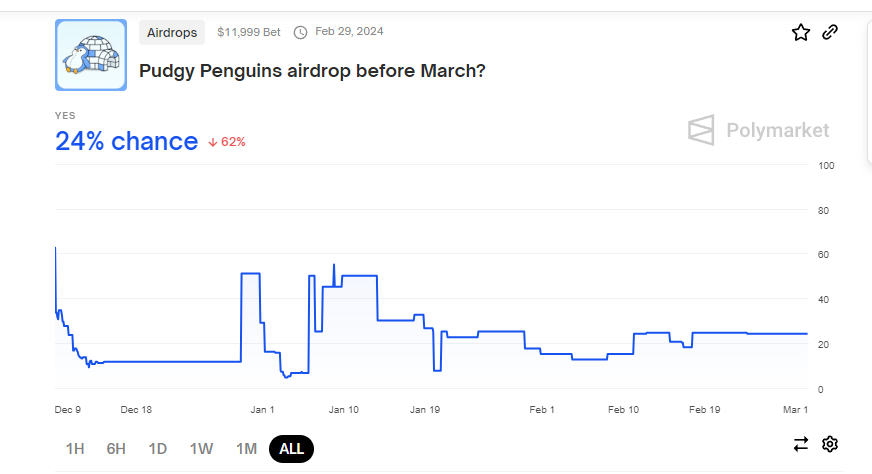
Web3 guilds have been around since 2020. But adding a layer of reputation to them creates open, distributed graphs of verifiable proof of work. When taken as a network, that could be valuable. One way to think of it is like this: What is more valuable? A list of anonymous wallet handles that you know nothing about or a curated list of wallet handles that have verifiable proof of being early adopters of new games or products?
We tend to believe in the latter. That is the reason society values social degrees and affiliations with prominent institutions so much. We outsource the process of trust and verification to a third party. Guilds enabled by YGG are simply aggregations of verifiably skilled users coordinating for economic benefit.
We are already seeing flavours of that with the communities launching new tokens targeting NFT holders, like Mad Lads and Pudgy Penguins. This is for two reasons:
- To bootstrap their community by rewarding the most active communities in Web3
- To prevent sybilling of rewards as ownership of these assets can’t be spoofed
Blockchain analytics products such as Nansen can identify on-chain interactions like the movement of assets. But to be able to identify a gamer’s prowess in a niche requires more sophisticated systems of analytics. YGG does this through what are known as Superquests.
A quest engine is primarily a well-embedded suite of analytics that tracks user behaviour within a game. Think of it as a mix of Google Analytics and a credentialing system. In essence, it studies how long gamers take to cross a level and ranks users on a relative basis. The data is what makes quest engines unique, as not all of it can be gathered from on-chain analytics alone. The access to proprietary data about gamer behaviour and its open credentialing (through SBTs) is what makes YGG’s current positioning quite powerful.
In Web2 systems, when a power user climbs up the rank list, the platform owns the data and the credentialing. Influencers in Web2 economies often recognise the downsides of being de-platformed when they can no longer interact with their audience base.
In my mind, what YGG has built falls right in the centre. It looks at what gamers do on centralised games (like Axie Infinity) and passes on the credentialing to an open, public and permissionless system. Any game can track users with NFTs from YGG and open up access to collect user feedback.

Such a model has its own flaws, too. As I write this, only Axie Infinity and Pixels have Superquests. This means if you play a Web3 game not supported by YGG, you have no means of proving your skill on-chain today. For games to embed the quest engine is not just a matter of integrating an SDK (as you would on Google Analytics). Developers would need to learn the intricacies of a new game, come up with models to rank users on the basis of platform behaviour and work with the team to create quests before YGG’s quest engine can be relevant for a new game. This takes time as of today and is not an automated, permissionless process.
You could say that a manual element is simultaneously a bug and a feature. If all that YGG was offering was simply blockchain analytics for gamers, it would not solve the other side of the equation, which is building community, onboarding non-crypto-native users and developing distribution. The manual elements help developers tap into the insights YGG has built over the past few years of working with Axie Infinity. In my understanding, as the number of games in Web3 evolves, the product will increasingly become a standardised SDK.
Part of the reason why a product like an analytics SDK cannot be commoditised overnight is that the mechanisms of analysing engagement in Web3 are distinctly different from Web2. In the latter, you can look at session times and presume a gamer is sticky. In the former, you are inclined to see a whale spend money and presume the product is doing well. A gamer who is truly value-additive in a Web3-native gaming economy is likely someone who balances economic activity with community engagement.
It takes time to observe, track and distil which gamers are actually net beneficial to an emergent gaming economy like that of Pixels. More importantly, it takes time for communities (like the guilds on YGG) to go through the learning curve of interacting with a new game. So, the delays are, rather ironically, a feature and not a bug. Having said that, as the industry evolves and the number of Web3 games goes into the hundreds, YGG will have to find mechanisms to rank gamers faster.
This mix of balancing onboarding retail users and using tech to better understand their behaviour is not new. In fact, much of the web has evolved to be what it is due to efforts to balance the onboarding of users with a new tech-based primitive, as we will soon see.
Why This Matters
Technofeudalism by Yanis Varoufakis starts with an exploration of what experiential value is in the context of labour markets. He argues that certain jobs have an experiential value attached to them in a way markets cannot price efficiently. For instance, a doctor cannot put a price on the pride of saving a life. Or, a teacher cannot necessarily measure the value of inspiring a child early on in their life.
But those elements are parts of why they sign up for the job, even when they may not pay as much as certain other jobs.
In exploring the guild economy, I realised that many of the users we spoke to were in it for the experience of collaboration and community. Token rewards and NFTs are good for commercial reasons, but presuming a Web3 gaming economy cannot take off without a bull market is a bit flawed. Much like society, the gaming ecosystem in Web3 is filled with a mix of users.
Some users are interested in governing protocols and helping with product feedback. Others are exclusively focused on trading. Most want an escape from life. But what is often ignored is the role a sense of community plays in the equation.
Guilds and Web3 games (as a genre) are building meaningful pathways for the restoration of community and leisure with elements of financialisation in it. At the crux of that transition are micro-communities formed around these digital worlds.
Let me explain why I think that is the case. In a recent piece titled “The Tremendous Yet Troubled State of Gaming in 2024”, Matthew Ball broke down the economics behind gaming. Among the myriad of things he flagged is how revenue in gaming has stagnated over the past few years.
For context, the US economy has grown faster than gaming revenue has in the past few years. It is a harsh metric that explains the state of gaming as it stands. Although we spend more time in games — and the capacity to spend in games has increased with both Gen Z and millennials becoming adults — the revenue in the industry has begun stagnating.
Micro-communities collaborating on in-game quests (like guilds) provide avenues for individuals to meet and interact with other users within game economies. Whilst traditional social networks have become powerful engines that connect users to one another, they do little to create financial flywheels that retain users. You could spend your time talking to other users on Twitter or Instagram, but it may not yield access to a collector’s item. Guilds blur the lines between historically crypto-native primitives and retail users.
You come for the NFTs and stay for the experience.
For instance, a group of gamers could, in the near future, create a DAO with individual gamers being multi-sig owners without being aware of how Gnosis works. Or, they could be trading in an exchange that settles on an AMM in Ronin directly from a game’s interface without realising how DEXs work.
Games have the power to package crypto-native primitives and offer them to retail users in mechanisms that are not complicated. Part of the reason networks of verified, credible users — such as the ones that have aggregated around YGG — would increasingly matter is that game economies that run on-chain could hypothetically grow to be larger than DeFi is today.
We got a taste of what that transition would look like for a short period when Axie Infinity NFTs were trending.
Naturally, this transition is not going to happen overnight. In fact, studying how Web2 attention economies have evolved gives us a hint of what may happen in the future. Author Taylor Lorenz explains the early days of present-day influencer marketing in Extremely Online.
In the mid-2000s, as blogs and social networks took off, the idea that individuals could earn online through creating content seemed far-fetched. Brands preferred working with traditional advertising outlets such as print media or television. So, even if a creator had both reach and influence, the probability that they would be able to collaborate with a brand was low.
Creators on the internet were not considered to be “premium”, the way traditional media stars were perceived.
A senior executive at YouTube noticed this pattern. In July 2010, George Strompolos, a manager at YouTube, launched its Partner Grant Program. In effect, it would give $1,000 to creators who were rising on the platform, with the caveat that the grant would be repaid from future ad revenue. It was an investment made by the platform on its top creators.

The money paid for better cameras and editors. By the end of 2010, the programme had disbursed close to $5 million to over 15,000 creators. The evolution of the web was marked by airdrops (of sorts) long before crypto was a thing.
A year later, George Strompolos left YouTube to scale what was known as multichannel networks. A manager could negotiate far better deals for creators if there were multiple creators working under the same umbrella. A brand could tap into channels that had combined reaches larger than that of television networks. Dubbed “multichannel networks (MCNs)”, they were essentially agencies that worked with multiple creators to assist with commercial discussions with brands.
Some of the MCNs of the time could accrue over 350 million views a month. Given that MCNs could decimate YouTube’s native advertising by bridging creators directly to brands, the platform acquired MCNs of its own. The 2010s were marked by multiple similar acquisitions by firms like AT&T and Disney.
The reason I went on this tangent is because the web has historically evolved in two steps. First, through the aggregation of large users. And then, through filtering of the users for better value capture. MCNs are an instance of standalone agencies aggregating creators that had distribution and then filtering them on the basis of how content performs.
YGG is serving a similar function for Web3 gaming today. In their case, unlike MCNs of decades past, they have an open standard that allows any game to recognise and detect power gamers through tools like soulbound tokens.
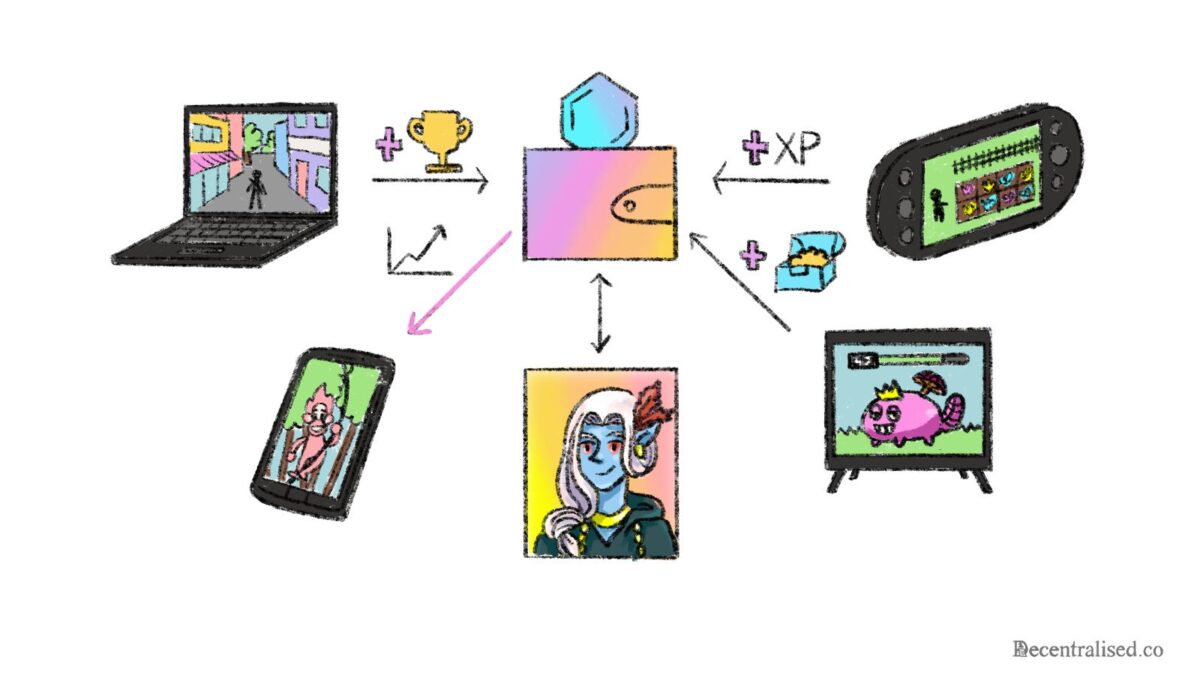
In the 2021 cycle, the consensus was that gamers would want to own their in-game assets and there might be a point in time when assets between games would be interoperable. You could take assets from one game and use them in another. But that may take a while. One way to make the transition easier is to recognise a gamer’s efforts in a game and make open stamps for it.
If you recognise that a gamer has spent 10,000 hours on a game, as a developer, you may want to offer a new game to the user for free with added perks. In such a model, all a developer needs to do is verify the user’s reputation and allocate assets in proportion to it.
The portability here is of reputation, not assets. To me, that is powerful because in the past, even if assets could become interoperable, they were dependent on game publishers to be useful. That is, if a game went down, you could do nothing with your NFTs. In a model where a gamer’s reputation and skill sets are verifiably credentialed on-chain, the user could access a much wider suite of products because they could show that they were early to a game.
It is not the assets that count here. The reputation is where the value is captured.
Naturally, this has a much bigger implication on the state of the internet itself. Today, when you build an audience on Twitter, Instagram or LinkedIn by virtue of your expertise, the platform owns the outcome there. If Elon Musk feels you need to be banned, there’s not much that can be done. When creators switch between platforms, they often start from scratch. This is partly why you don’t see the same set of influencers across platforms.
But in a model where expertise is interoperable and accessible across products, individuals would stand to benefit better.
Gabby described this as the formation of SMEs. In his view, a guild is simply a small or medium enterprise. In emerging markets (like India), informal economic units like street shops or tiny manufacturing units are a dominant source of employment. In his view, on-chain DAOs are an extension of these SMEs coming on-chain. Skilled individuals could collaborate on complex gigs. In the past, traditional attestation networks (like universities) would credential individuals for their ability to take on a task.
As work goes increasingly digital — and remote — we will need new forms of attestation for a person’s skill. We will also need newer primitives to coordinate on gigs, split revenues and build a reputation that is verifiable in the process. Guilds are well-positioned to take on that challenge, but they need tooling. That is the gap being addressed by the soulbound token approach YGG is taking to its community.
I find the approach interesting because instead of locking users within their ecosystem as Web2 platforms often do, YGG is enabling easier discovery of their best gamers. Anybody can track down wallets that have the most SBTs from YGG and seek to onboard them. But a recurring theme we saw in many of our conversations with YGG’s members is that the SBTs are only a perk. They are actually sticking around for the community.
I dubbed this phenomenon “come for the speculation, stay for the community”, as I heard stories of how users stuck around during the play-to-earn economy’s crash because they had friends within the ecosystem. So even when strong incentives are offered and members often dabble with new games, they have a reason to stay loyal to YGG’s ecosystem. The community, in this context, becomes a moat.
According to The New York Times, some 30% of all Web3 gamers are based in the Philippines. Many of these gamers transition to full-time roles involving guilds. The NYT article highlights two of YGG’s own guild members who have seen such transitions. One of them is Joniel Bon, or JB.
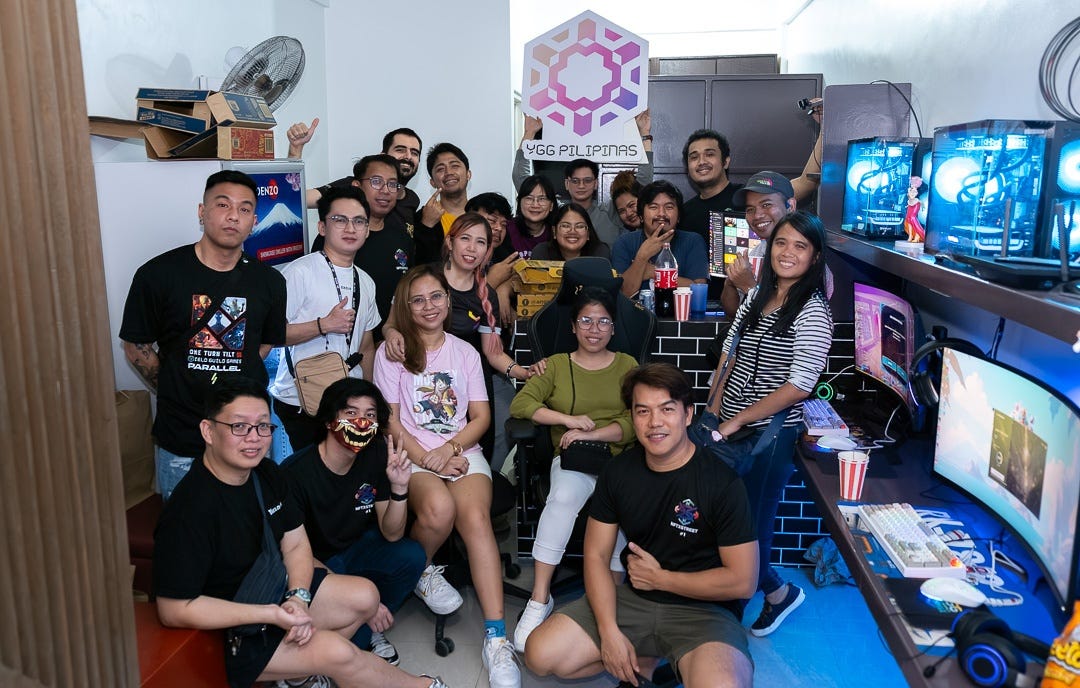
Formerly a member of the IT sector in the Philippines, he currently runs a YGG subguild named NFT X Street and an internet cafe of the same name in northern Manila, that is focused on Web3 gaming. Ian Dela Cruz, better known as Disi, manages a farm with his family in Pampanga, Philippines. Disi had his share of losses in the Axie Infinity cycle but transitioned to being a Twitch streamer and eventually became captain of the YGG Esports team.
In essence, the community becomes an engine for people to discover alternative career paths that may have never been explored before. Does it come with risks? Yes. But it offers an alternative where historically there were few.
Currently, YGG’s focus is exclusively on gaming. But in the future, it could expand to other more niche tasks. It is not hard to imagine the emergence of guilds focused on AI labellers, executive assistants, accountants or copywriters. These guilds would need a unifying mechanism of credentialing skill and reputation. Once that is done, it would be easy to match them with potential employers looking to work with them. Naturally, such a model would require having the ability to assess a participant’s work, rank it on a relative basis and issue NFTs.
The LinkedIn of the future will have on-chain queries for wallets that have SBTs to credential them. Users will coordinate tasks through guilds and split revenues with smart contracts. Each completed invoice could add to the guild’s reputation. Such a system could lead to the vendor getting better customers as they could verify a buyer’s past transaction records. For the buyer, the upside is in working with service providers that have verifiable records of past work and payments received.
In a model where reputation is pseudonymous and interoperable, users could pass on information about their expertise with a single click on MetaMask. They would have the ability to choose not to pass on data to providers that spam them. Naturally, such a network of reputation-verified users will need a niche to bootstrap from. Gaming just happens to be that niche today. YGG’s Superquests are a mechanism for tracking off-chain user behaviour (in games) and creating on-chain primitives (SBTs) that are interoperable.
Niche-specific reputation networks would require two fronts:
- Bootstrapping a community through onboarding users at the periphery. For gaming, that is the casual gamer who is looking at Web3 gaming with intrigue.
- Creating flywheels using technology to better track and understand user behaviour within products and issuing on-chain attestations that are openly accessible.
I call it a flywheel because the more on-chain attestations a user has, the higher the probability that they will continue to tinker with new products to maintain their lead. Naturally, one could wonder why a platform would want to open access to its top users. I think it boils down to network effects.
For games with large user bases (like Call of Duty), it would make no sense to embed a tool like YGG and open up information on their users. But for emergent, smaller players (like Pixels), having the ability to get these reputation SBTs themselves becomes a hook. That is, a game would be easier to adopt and discover if it has an attestation model like the one enabled by YGG.
In my view, much like how users aggregate around which DeFi assets offer the most yield, gamers (and niche-specific users) would aggregate around platforms that offer the most openly verifiable reputation systems. We could soon see how this plays out as Web3 social networking evolves. For now, gaming is where most of this action is happening.
YGG’s long-term vision is to scale such a model for all of the gig economy. Open attestation systems that track the best in all forms of jobs. But that is a far-fetched vision that could take decades to play out. For now, they are building towards that vision with games as a wedge. Few other places offer data that is as rich and verifiable as the virtual economies in games.
In doing so, YGG is also opening up access — both to crypto and better job opportunities on the web for a generation of users that historically worked only traditional jobs.
[This article has been written and prepared by Joel, Siddharth and published by the GCR Research Team, a group of dedicated professionals with extensive knowledge and expertise in their field. Committed to staying current with industry developments and providing accurate and valuable information, GlobalCoinResearch.com is a trusted source for insightful news, research, and analysis.
Disclaimer: Investing carries with it inherent risks, including but not limited to technical, operational, and human errors, as well as platform failures. The content provided is purely for educational purposes and should not be considered as financial advice. The authors of this content are not professional or licensed financial advisors and the views expressed are their own and do not represent the opinions of any organization they may be affiliated with.












